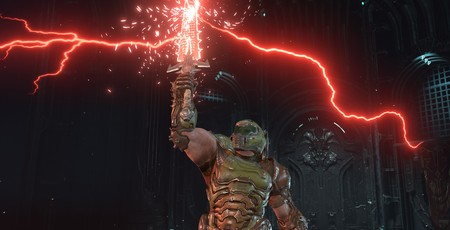
Price: £49.99
Developer: id Software
Publisher: Bethesda
Platforms: PC, Xbox 360, PS4
Version Reviewed: PC
Bigger, bolder, tougher, messier. These four words sum up Doom Eternal. Id’s sequel to its fearsomely-good reboot of the classic shooter is more expansive, more challenging, more action-packed, more violent, and generally just more. Those first three points are all gravy. When Doom Eternal is in full flow, it might just be the most thrilling FPS I’ve ever played.
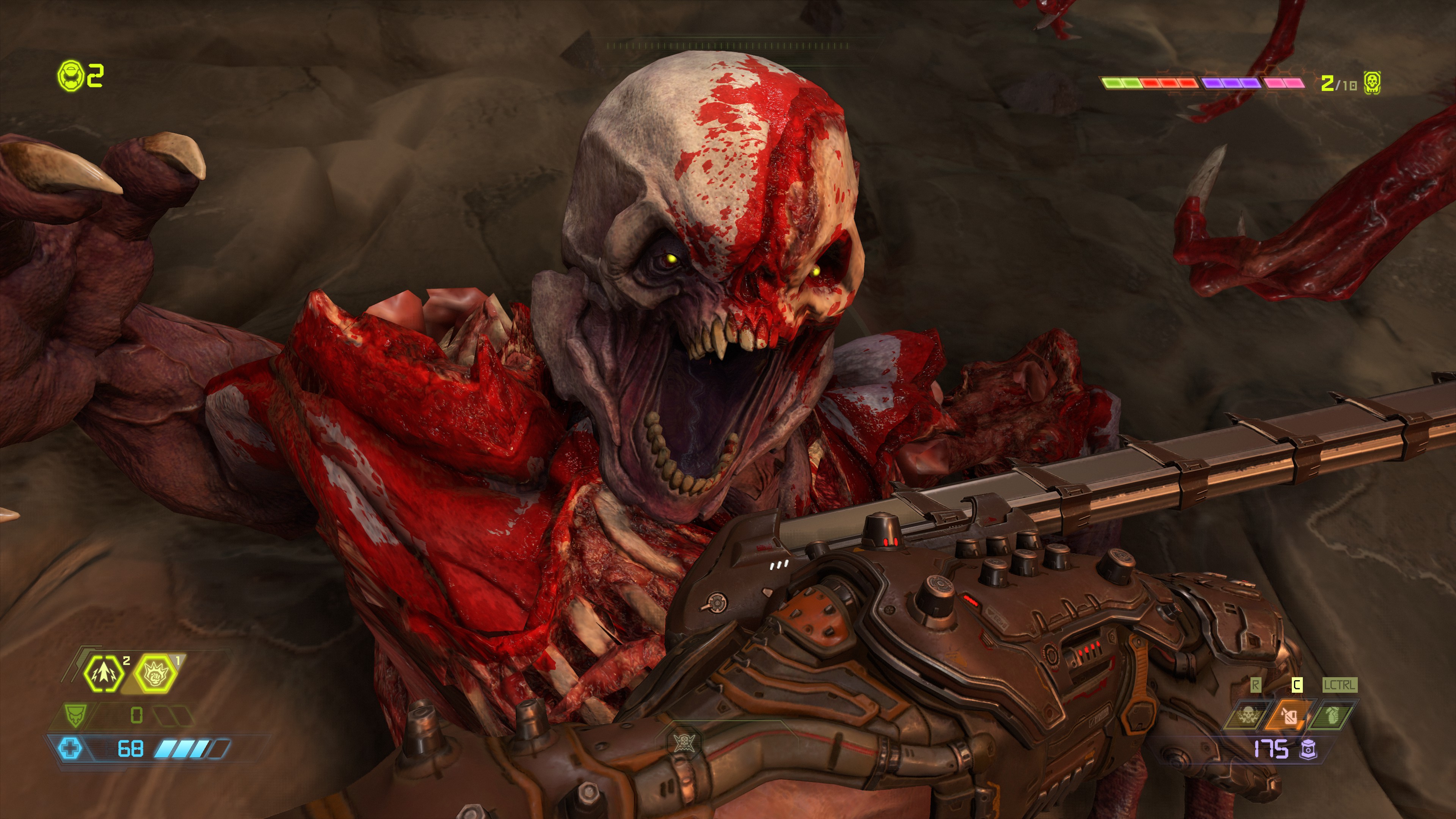
But that final point – messier – is not entirely meant as a compliment. Id’s 2016 reboot walked a fine balance between classic FPS play and more modern design ideals. Doom Eternal adds a lot of new ideas to the formula, to the point where it begins to feel overstuffed, like a mancubus who’s one super-shotgun blast away from bursting. Sometimes it many, many combat mechanics became too much for my brain to handle, while other features are of questionable merit when included in a Doom game.
Whereas 2016’s Doom broadly followed the “story” of 1993’s Doom, Doom Eternal uses Doom II as a jumping-off point for its own, distinct tale. The demonic forces of Hell have escaped Mars and ripped Earth a new one. To stop them, you, the Slayer, must track down and kill three “Hell Priests” responsible for summoning the demonic hordes. And of course, being the Slayer, you won’t allow anything to get in your way.
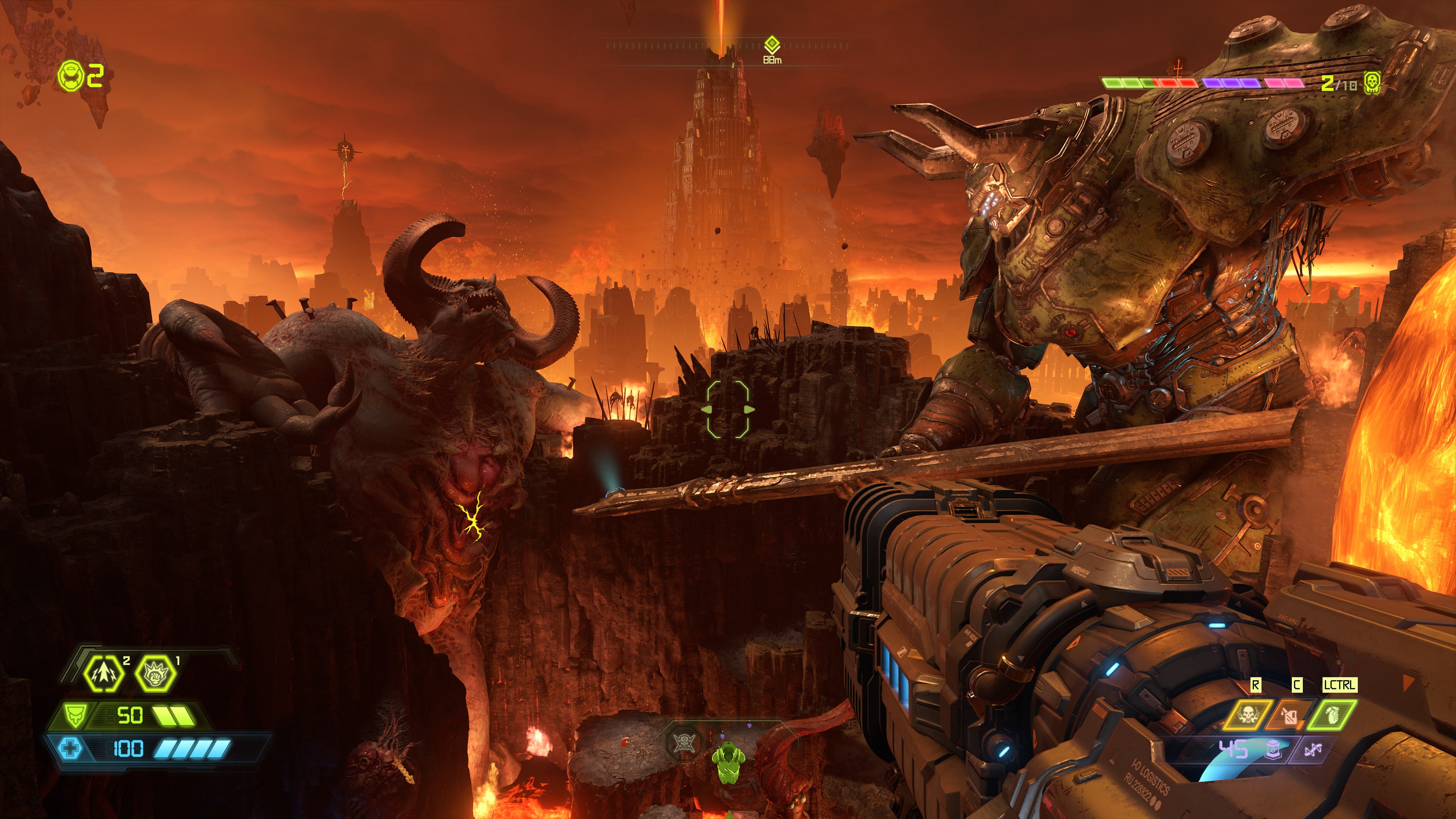
That point – anything – is significant, although I won’t specify why. I will say that, if you felt that 2016’s Doom leant a bit too heavily on the narrative, then you should be aware Doom Eternal has considerably more story. And whereas Doom kept most of its worldbuilding buried in the codex, much more of that lore is exposed to the air `this time around.
I don’t mind the broad strokes of the story, although it is white-hot nonsense that treads similarly scorched ground to the plot of Darksiders. I do have issues with how it is told. Whereas 2016’s Doom kept you squarely in first-person at all times, Eternal frequently breaks the main perspective with interluding cutscenes. I’m not a big fan of cutscenes at the best of times, but their presence in a Doom game verges on sacrilegious. They completely break the flow of the game without adding anything beyond an occasional reminder of what DoomGuy’s suit looks like. It’s a directive decision by id that I don’t understand.
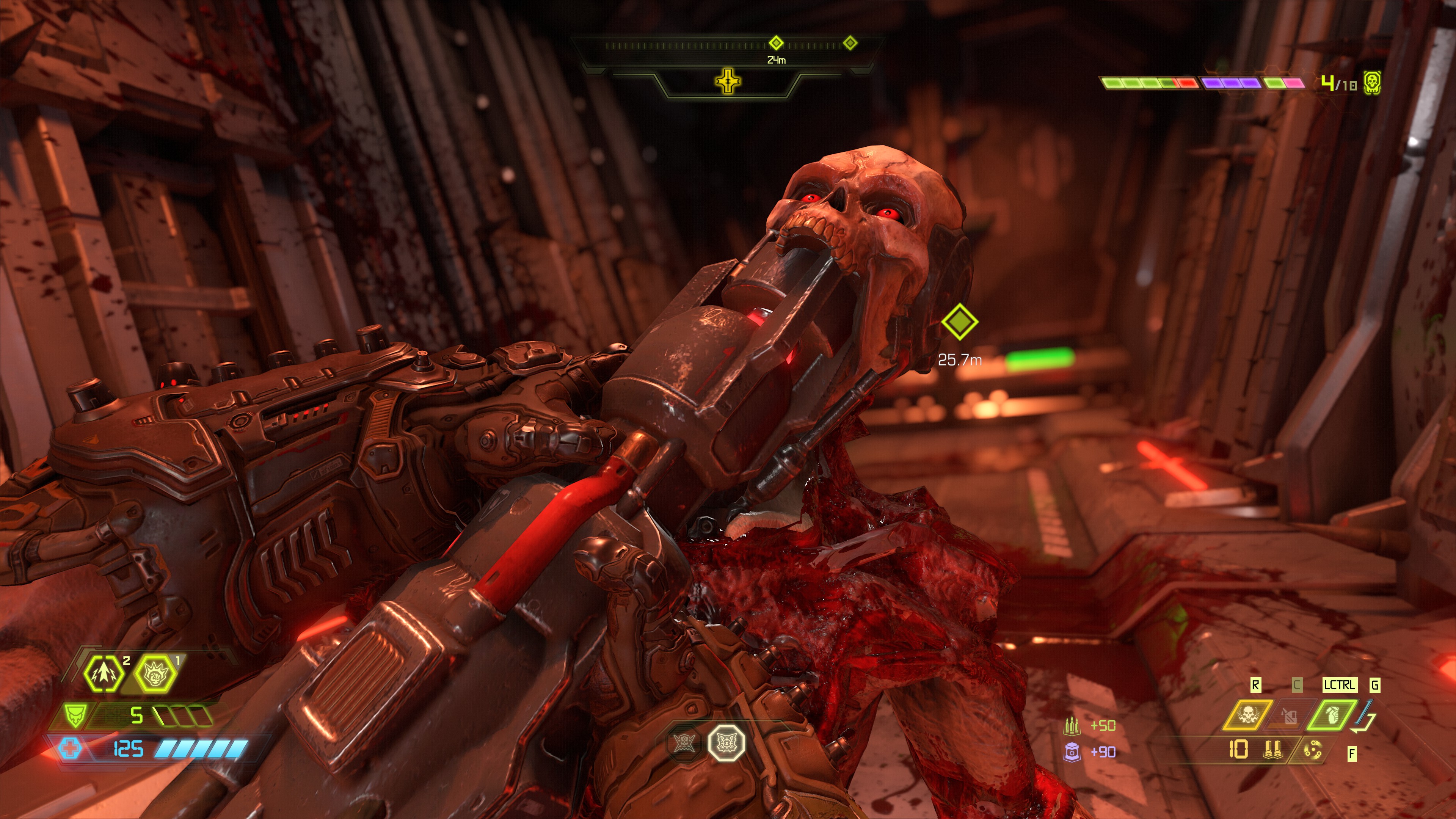
Flow, incidentally, is an issue Eternal struggles with in several ways, as we’ll come back to later. For now, let’s focus on what you really want to know about. Combat has the same fundamentals as the 2016 reboot. You’ll enter an area full of demons, blast them to bits with your weapons, use glory-kills to top up your health, and your chainsaw to refill your ammo. Id has essentially taken this foundation and decked it out with new weapons, abilities and enemies. Alongside your chainsaw, the Doom-Slayer is now equipped with an arm-blade that makes glory kills extra grisly, alongside a shoulder-mounted grenade launcher that can fire standard explosives or ice-grenades that freeze enemies in place. More mechanically significant is the delightfully-named Flame Belch (coincidentally my term for acid reflux) which causes enemies to drop armour when set alight.
The two most significant additions to combat, however, are enemy weaknesses and the Blood Punch. Every enemy now has explicated weaknesses to certain weapons or abilities. For example, Revenants and the Spiderlike Arachnotrons can have their primary weapons disabled with carefully placed shots or explosives, while lobbing a grenade into a Cacodemon’s mouth will cause it to swallow it (accompanied by a wonderful “gulp” noise), making the demon instantly vulnerable to a glory kill. Meanwhile, as well as dropping health, glory kills also fill up the “Blood Punch” meter, letting you unleash a thunderous melee attack causing a shockwave that damages enemies in a 180-degree arc.
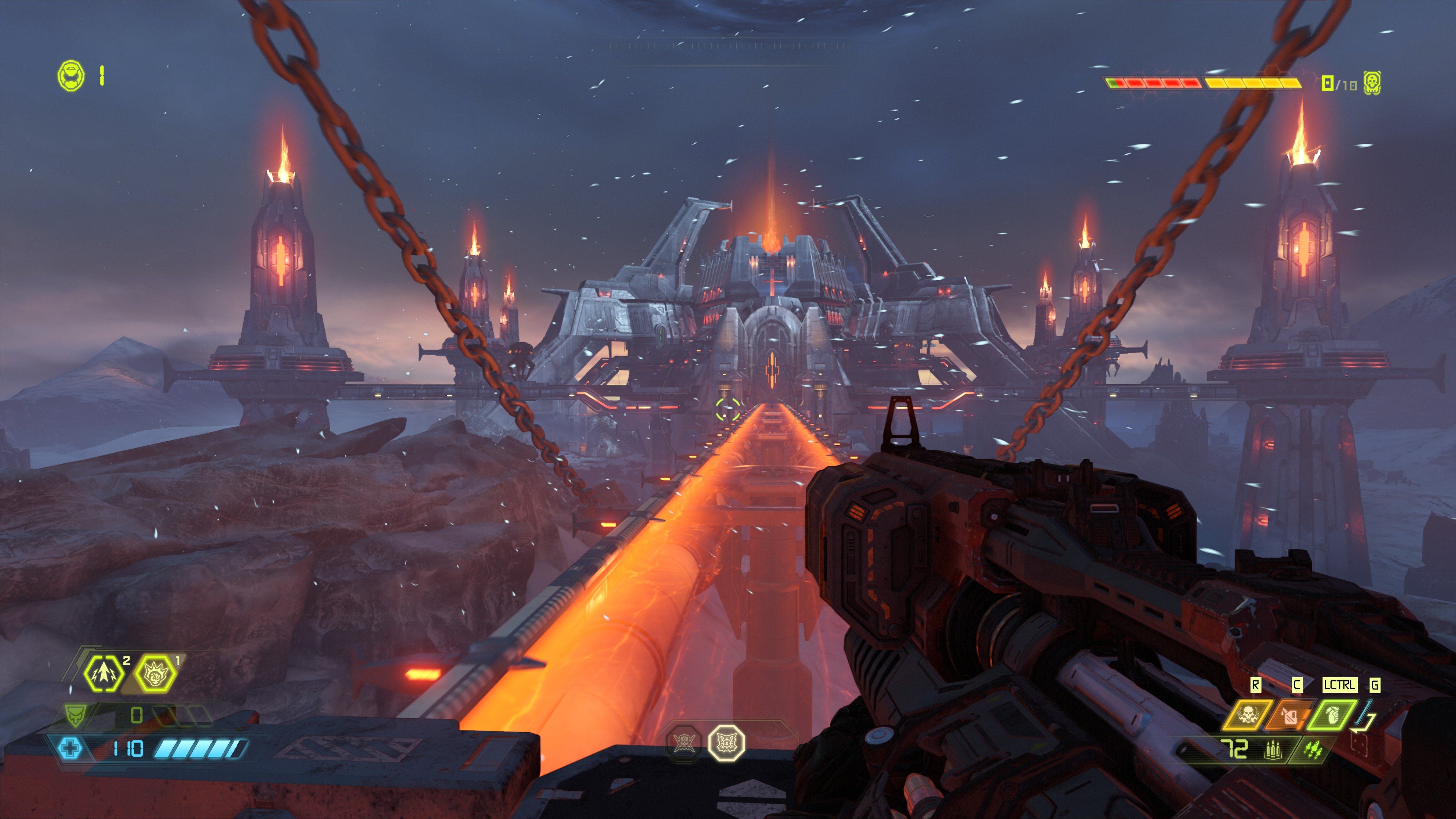
You’ll need to familiarise yourself with all these abilities, as the enemy roster has almost doubled from Doom, and Eternal isn’t afraid to throw them at you like some demonic tennis-ball machine. Accompanying the familiar Imps and Hellknights (which have all received a visual makeover) are Imp-like Prowlers who can teleport around the level, Arachnotrons, and the “Dread Knight”, a cybernetic version of the Hellknight that has swords for arms. Eternal also offers a whole other class of “Super Heavy Demon”. These are essentially minibosses that include the robotic Doom Hunter, and the return of the Arch Vile, a magical mega-bastard who not only is tough to kill, but respawns and buffs all other enemies until it is killed.
I can’t imagine what a nightmare balancing these moving parts must have been, but to id’s credit they largely succeed. It says a lot about Eternal’s combat that the first weapon you pick up is a shotgun rather than a pistol, one that is almost immediately upgraded with a gatling-style automatic fire. It aims to up the ante from the very beginning. You'll also use this shotgun throughout the game, as you will every other weapon and attachment. When you pick up the chaingun, the heavy machine-gun remains useful for its micro-missiles and precision shots. When you pick up the rail-gun-esque Ballista, you’ll still whip out the plasma rifle to deactivate soldiers’ energy shields. I hardly used the rocket launcher in 2016’s Doom. In Doom Eternal it was a key part of my arsenal, and I knew exactly when to bring it out.
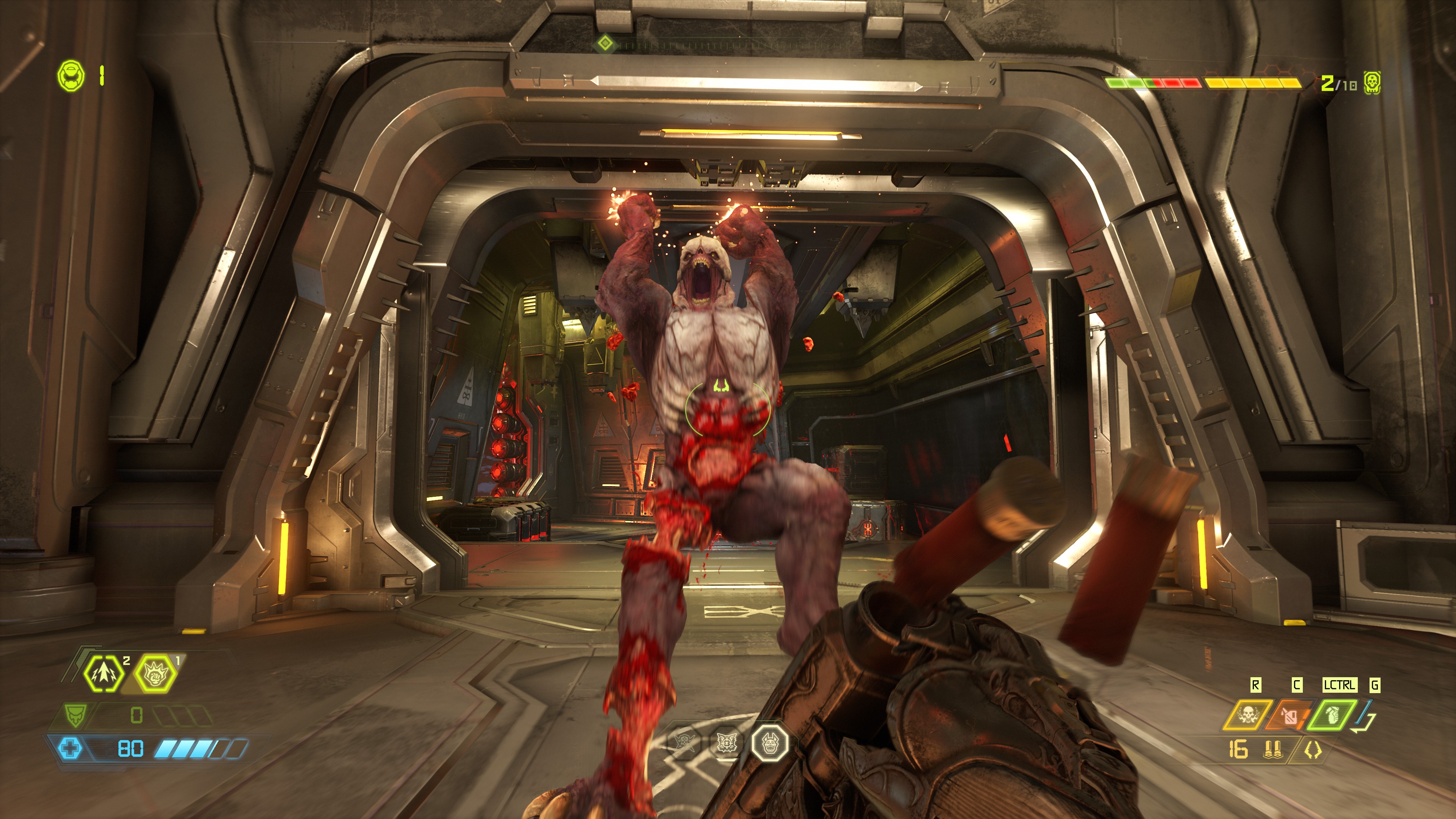
At its best, Doom Eternal’s combat is unparalleled, an Argent-powered adrenaline pump where you literally cannot stop moving and shooting, ripping and tearing. You’re perpetually low on ammo and health, and so perpetually inclined to push forward, to quickly blood-punch that mancubus to strip it of its armour then dash backward to line up a rail-blast from the ballista, bursting its upper body like a pomegranate in a pressure cooker. Oh yes, Eternal is easily the most violent game I’ve ever played. On top of the astonishingly gratuitous glory-kills kills, enemies now gradually disintegrate as you blast and batter them, skin and flesh rending off bone until what you’re left fighting is little more than a wet skeleton.
There's a whole bunch of other stuff I haven't even mentioned, like the little dash manoeuvre that transforms how you move around combat arenas, or the Rune upgrade that slows time while pressing alt-fire in the air, giving you a tiny bit of breathing space to plan your next move. Yet despite id’s efforts to spin all these plates, sometimes Eternal’s complexity works against it. While most of Eternal’s enemies are a joy to battle, a couple are more frustrating than entertaining. The first of these is the Whiplash, a snake-like enemy that’s very elusive, tougher than you’d expect, and has an attack that’s does heavy damage and interrupts your movement. I constantly stumbled over them whenever they entered the fray, and found myself annoyed that they got in the way of enemies I wanted to fight. The other is the Marauder, an enemy clearly inspired by Dark Souls, whose attacks have to be “parried” with a weapon blast at the right time. Hence, they must be killed in a specific way that doesn’t fit with the rest of the game, stopping the flow of the action rather than contributing to it.

The true inhibitor to Doom Eternal’s flow, however, is the level design. Eternal’s levels are much larger and more geometrically complex than those of Doom, wide-ranging spaces often comprising several areas with vast chunks of empty space between them. Getting between these areas involves a lot of perilous first-person platforming that frankly I didn’t see the point of. The penalty for failure here is minimal, but there’s nothing that bursts your battle balloon quite like falling down a big hole because you *slightly* mistimed a jump.
I suppose the intention is to offer a palette cleaner between fights, a chance to wipe the blood from your visor and catch some fresh, viscera-free air. But 2016’s Doom didn’t need elaborate platforming sequences to do that, and I don’t see why Eternal needs them either. The early game particularly suffers from a staccato rhythm, with punchy fights dispersed between long bouts of platforming. Fortunately, in the mid-to late game those gaps become smaller. There’s a level smack in the centre of the game that’s basically one long fight through a sequence of tower blocks, and it’s undoubtedly one of the highlights.
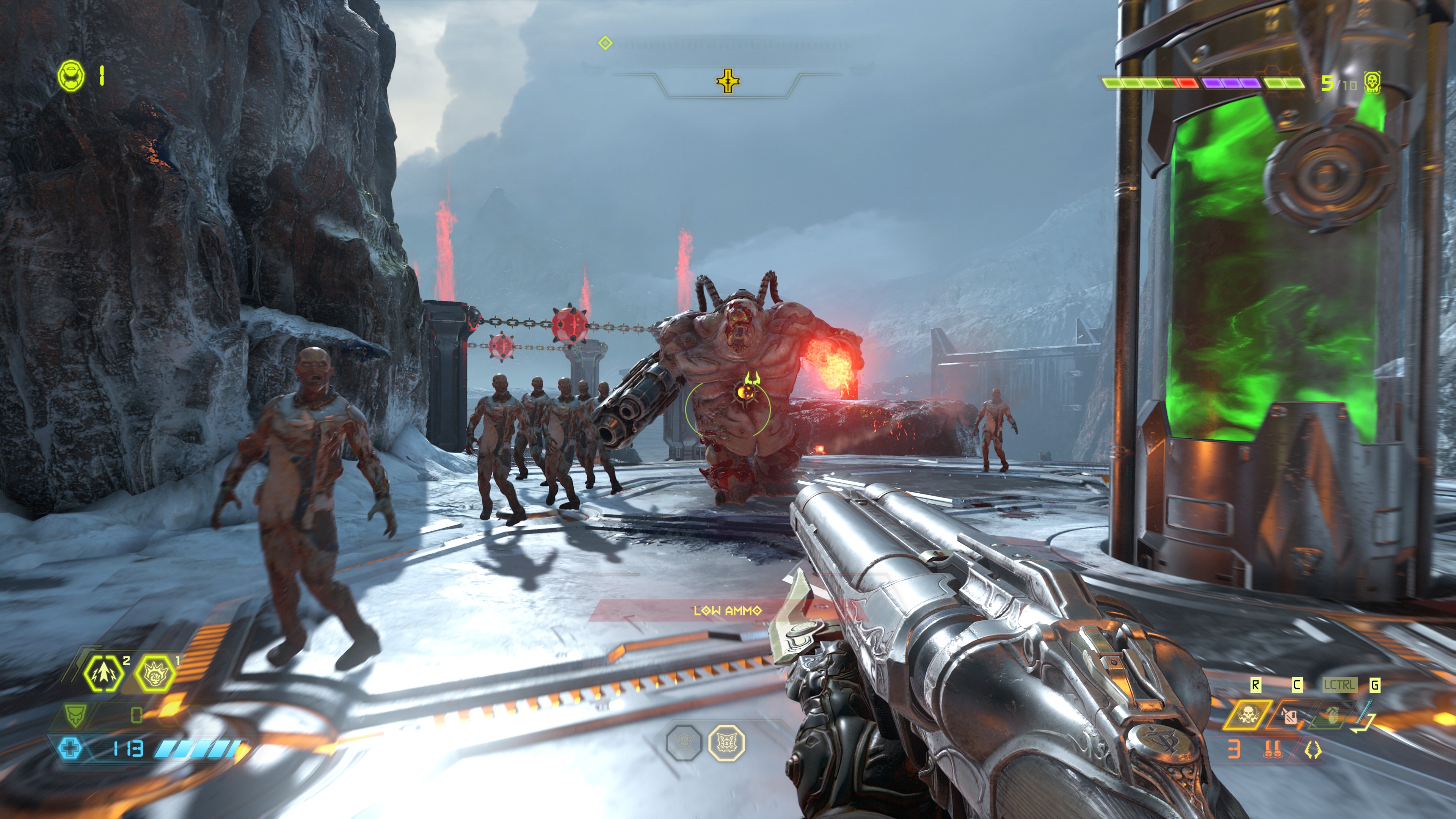
One final point. Doom Eternal’s campaign has one extremely cool idea related to who you’re fighting that it only scratches the surface of. The way the story was building, I expected the core combat to pivot in a very different direction around the halfway point. Sadly, it only comes to pass at the very end, in a much more diluted form than I anticipated. I’m being vague because I don’t want to spoil any specifics, but you’ll understand what I’m talking about when you play.
Doom Eternal undoubtedly has the highest highs of any game in the series. Some of the encounters left me almost quivering from the rush. But it’s also a less even experience than its predecessor, that goes in all kinds of directions to improve and add more to that original framework and all those extra seams make it more liable to burst. Ultimately, Doom Eternal won’t change your life, although in its more intense moments, it may merit a change of trousers.
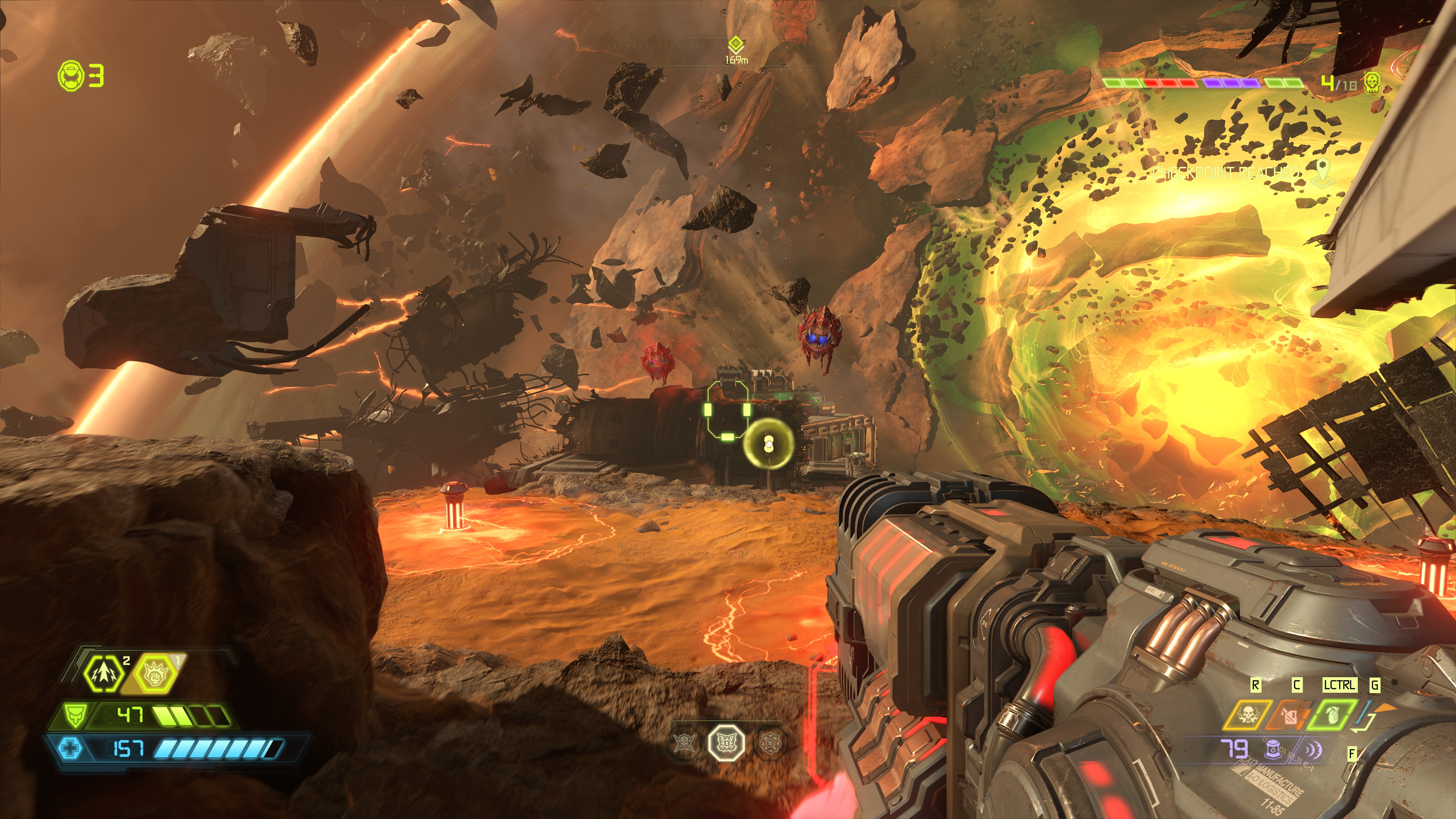


MSI MPG Velox 100R Chassis Review
October 14 2021 | 15:04

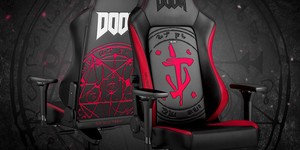





Want to comment? Please log in.